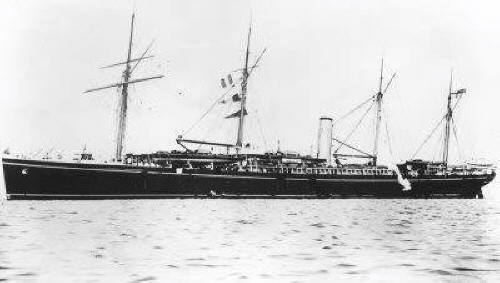
NAVYPEDIA
 Support the project with paypal
Support the project with paypal
Photo

Hecla 1880s
Ships
Name |
No |
Yard No | Builder |
Laid down |
Launched |
Comp |
Fate |
|---|---|---|---|---|---|---|---|
Hecla (ex-British Crown) |
7A, C7 | Harland & Wolff, Belfast |
7.3.1878 |
10/1878 |
destroyer depot ship 1912 |
Technical data
| Displacement normal, t | 6400 |
|---|---|
| Displacement full, t | |
| Length, m | 119.6 pp |
| Breadth, m | 11.8 |
| Draught, m | 6.89 |
| No of shafts | 2 |
| Machinery | sails + 2 2-cyl HIC, boilers |
| Power, h. p. | 1758 |
| Max speed, kts | 12.1 |
| Fuel, t | coal 2200 |
| Endurance, nm(kts) | 26400(10) |
| Armament | 5 x 1 - 160/16 64pdr 71cwt MLR, 1 x 1 - 121/21 40pdr 35cwt BL, 4 2nd class torpedo boats |
| Complement | 277 |
Graphics
Project history
Hecla was the merchant ship British Crown purchased whilst building. She carried a number of Second Class TBs, and was fitted to service other TBs and to see to the torpedo and mining needs of a fleet. She served with the Mediterranean Fleet, and was commanded by a succession of distinguished officers who were amongst the leading torpedo specialists. Many of the most important experiments in torpedo tactics were carried out under their control. Had war come no doubt the Hecla and Vulcan would have proved useful launching strikes with their small TBs against enemy bases. Hecla was described as a 'torpedo depot ship and floating factory'.
Modernizations
1880s: - 1 x 1 - 160/16; + 1 x 1 - 127/25 BL Mk I/II
Naval service
In 1912 Hecla was converted to destroyer depot ship and sold to BU in July, 1926.
 HOME
HOME FIGHTING SHIPS OF THE WORLD
FIGHTING SHIPS OF THE WORLD UNITED KINGDOM
UNITED KINGDOM TORPEDO SHIPS
TORPEDO SHIPS HECLA torpedo depot ship (1, 1878)
HECLA torpedo depot ship (1, 1878)
